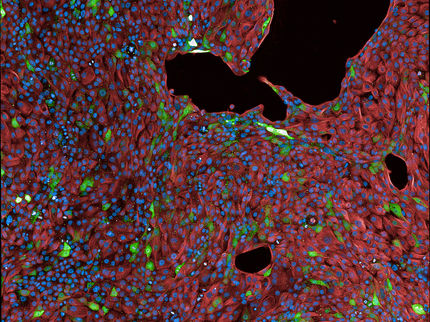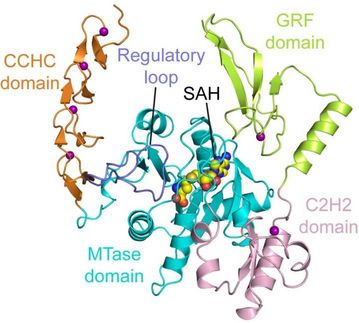Researchers divide enzyme to conquer genetic puzzle
Rice University scientists find split, mutant protein serves as building block for synthetic biological circuits
Rice University researchers have found a way to divide and modify enzymes to create what amounts to a genetic logic gate.
Biochemist Matthew Bennett and graduate student David Shis created a library of AND gates by mutating a protein from a bacterial virus. The well-understood protein known as T7 RNA polymerase (RNAP) is a strong driver of transcription in cells.
Their discovery should help overcome a bottleneck in the development of synthetic gene networks that mimic digital circuitry. These networks could become diagnostic systems that look for signs of disease and, perhaps, gene therapies to find and treat disease in one step.
The research appeared in the Proceedings of the National Academy of Sciences.
"AND logic gates are normally found in electronics: You have a circuit with two inputs and one output," said Bennett, an assistant professor of biochemistry and cell biology. "In an AND gate, if the two wires leading to the gate are both on, then the output is also on. If either one or both are off, then the output is turned off."
Few options have been available to researchers seeking reliable and flexible components for their synthetic circuits. The library of AND gates created at Rice should add significantly to the toolbox available to build larger and more complex gene circuits, Bennett said.
In its native, full-length state, T7 RNAP turns on genes that have a specific "promoter," or target DNA sequence. The Rice researchers found they could program DNA to express the RNAP in two pieces, which could be manipulated via point mutations to target different promoters in a host cell. "The two pieces of the RNAP might even be made in different parts of the cell and they'll still find each other," Bennett said. "They have an affinity for each other, and once they combine, they'll work together as if they hadn't been split."
The enzyme carried out its function only when both halves of the split RNAP were present. Bennett and Shis modified the bacterium E. coli to produce the RNAP segments in response to specific sugar molecules found in the environment. One half of the RNAP is produced only in the presence of arabinose and the other in the presence of lactose. When both sugars were found, their proof-of-concept polymerase would turn on a target gene, in this case a reporter gene that encodes a green fluorescent protein.
Better yet, the RNAP was orthogonal; that is, it didn't fraternize with the E. coli's native protein pathways. "This special T7 RNAP will not turn on any other gene but its specific target," Bennett said. "In that way, it's transparent to the host. This gives us an easy way to determine whether or not it's working."
The researchers found that while split T7 RNAP was not as active in expressing protein products as the full-length polymerase, the pieces were more stable and less prone to mutations that could affect a gene circuit's function.
Bennett said the next step would be to test the split RNAP in hosts other than E. coli. "We want to port this into more complicated organisms: eukaryotes like yeast or zebrafish or mammalian cells. It will take a little bit of engineering to get them to work in more complicated organisms."
He sees advanced diagnostics as a reasonable goal for gene circuits using AND gates. "The two inputs can be programmed to respond to separate conditions, whether they're environment factors outside the organism or tissue-specific markers within a multicellular organism," Bennett said.
"For instance, your inputs could be cancer markers that would trigger a fluorescent reporter gene for diagnosis or tumor suppressors for treatment," he said. In addition, multiple gates from the library could be combined and layered to create more complicated circuits that simultaneously monitor many variables. "This means you could build circuits that turn on only in very specific conditions, which is important if you want to kill tumor cells without harming healthy tissue."
Most read news
Other news from the department science

Get the analytics and lab tech industry in your inbox
By submitting this form you agree that LUMITOS AG will send you the newsletter(s) selected above by email. Your data will not be passed on to third parties. Your data will be stored and processed in accordance with our data protection regulations. LUMITOS may contact you by email for the purpose of advertising or market and opinion surveys. You can revoke your consent at any time without giving reasons to LUMITOS AG, Ernst-Augustin-Str. 2, 12489 Berlin, Germany or by e-mail at revoke@lumitos.com with effect for the future. In addition, each email contains a link to unsubscribe from the corresponding newsletter.

























































